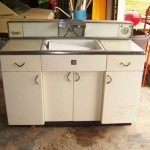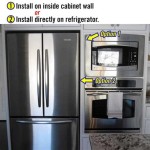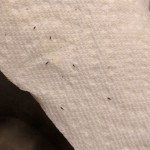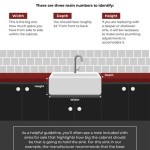How Often Should You Clean Inside Kitchen Cupboards?
Maintaining a clean and organized kitchen is crucial for both hygiene and functionality. While countertops and stovetops often receive daily attention, the interiors of kitchen cupboards frequently get overlooked. Determining an appropriate cleaning schedule for these spaces is essential to prevent pest infestations, mold growth, and the accumulation of dust and debris that can compromise the cleanliness of stored items and potentially impact food safety.
The frequency with which kitchen cupboards should be cleaned varies depending on several factors, including usage patterns, the types of items stored, and the overall environment of the kitchen. A one-size-fits-all approach is inadequate; instead, a considered assessment of individual circumstances is necessary to establish an effective cleaning routine.
The primary purpose of cleaning kitchen cupboards is to remove accumulated dirt, crumbs, spills, and other debris that can attract pests, harbor bacteria, and create unpleasant odors. Ignoring these spaces can lead to problems that extend beyond mere aesthetics, potentially impacting the health and safety of the household.
Factors Influencing Cleaning Frequency
Several key variables dictate how often kitchen cupboards require cleaning. These include usage intensity, the nature of stored items, environmental conditions, and the presence of specific issues like pest activity or spills.
Usage Intensity: Cupboards containing frequently used items, such as those near the stovetop containing spices or cooking oils, are prone to more frequent spills and splatters. These areas naturally require more frequent cleaning than cupboards containing less frequently accessed items, like holiday dishes or specialized baking equipment.
Type of Stored Items: Cupboards used to store food items, especially dry goods like flour, sugar, and cereal, are more susceptible to attracting pests. Additionally, leaking containers of sauces, oils, or condiments can quickly create sticky messes that require immediate attention. Conversely, cupboards dedicated to storing only sealed, non-food items, like cookware or dishes, may require less frequent cleaning.
Environmental Conditions: Kitchens located in humid climates are more likely to experience mold and mildew growth inside cupboards, especially if ventilation is poor. Similarly, kitchens in older homes may be more prone to dust and debris accumulation due to less effective sealing around cupboard doors and drawers. The general cleanliness of the kitchen overall also plays a role; a kitchen with regular sweeping and mopping will naturally have less airborne dust that settles inside cupboards.
Pest Activity and Spills: The discovery of pests, such as ants, cockroaches, or pantry moths, necessitates immediate and thorough cleaning of all affected cupboards. Similarly, any spills or leaks, regardless of the contents, should be cleaned promptly to prevent stains, odors, and the growth of bacteria or mold. Ignoring these issues can exacerbate the problem and lead to more extensive cleaning requirements in the future.
General Cleaning Guidelines
While cleaning frequency is adaptable based on the aforementioned factors, some general guidelines can help establish a baseline cleaning schedule. As a general rule, kitchen cupboards should be thoroughly cleaned at least twice per year – a deep clean in the spring and another in the fall. This biannual cleaning should involve removing all items, wiping down the interior surfaces, and reorganizing the contents.
In addition to this bi-annual deep clean, spot cleaning should be performed as needed. This might involve wiping up spills immediately, sweeping away crumbs from the bottom of a cupboard, or addressing any visible signs of dirt or debris. Proactive spot cleaning can significantly reduce the need for more extensive cleaning efforts later.
For cupboards containing food items, consider implementing a monthly check for expired or spoiled products. Discarding these items promptly prevents them from attracting pests or contaminating other stored food. While checking for expired items, visually inspect the interior of the cupboard for any signs of spills, crumbs, or pest activity.
High-traffic areas, such as cupboards near the stovetop or those containing frequently used spices and cooking oils, might benefit from more frequent cleaning, perhaps on a quarterly basis. Conversely, low-traffic areas, such as cupboards storing infrequently used items, may only require cleaning once per year.
When cleaning kitchen cupboards, avoid using abrasive cleaners or harsh chemicals that can damage the surfaces or leave behind harmful residues. A mild dish soap diluted in warm water is generally sufficient for most cleaning tasks. For stubborn stains or sticky messes, consider using a solution of baking soda and water or a specialized kitchen cleaner designed for the specific type of surface being cleaned.
After wiping down the interior surfaces, ensure they are completely dry before replacing any stored items. Dampness can promote mold and mildew growth, especially in humid environments. Consider using a clean, dry cloth to thoroughly dry the surfaces or allowing them to air dry completely before restocking the cupboard.
Addressing Specific Cleaning Challenges
Kitchen cupboards often present specific cleaning challenges, such as sticky residues, lingering odors, and pest infestations. Understanding how to address these issues effectively is essential for maintaining a clean and hygienic kitchen environment.
Sticky Residues: Sticky residues, often caused by spilled sauces, oils, or condiments, can be particularly difficult to remove. To tackle these messes, start by scraping off any excess residue with a spatula or scraper. Then, apply a warm, soapy water solution and allow it to sit for a few minutes to loosen the remaining residue. Scrub the area thoroughly with a non-abrasive sponge or cloth, and rinse with clean water. For stubborn residues, consider using a paste of baking soda and water or a specialized degreasing cleaner.
Lingering Odors: Lingering odors can be caused by spilled food, mold growth, or pest activity. To eliminate these odors, start by thoroughly cleaning the affected area. Then, place an open container of baking soda or activated charcoal inside the cupboard to absorb any remaining odors. Alternatively, you can use a commercially available odor eliminator specifically designed for kitchen use. For persistent odors, consider using a solution of vinegar and water to wipe down the interior surfaces.
Pest Infestations: A pest infestation requires immediate and thorough action. Start by removing all items from the affected cupboard and inspecting them for signs of infestation. Discard any contaminated food items immediately. Thoroughly clean the interior of the cupboard with a solution of soap and water, paying close attention to cracks and crevices where pests may be hiding. Consider using a vacuum cleaner to remove any loose debris or insect remains. To prevent future infestations, store food items in airtight containers and seal any cracks or holes in the cupboard. If the infestation is severe, consider contacting a professional pest control service.
Regularly cleaning inside kitchen cupboards is an important aspect of maintaining a healthy and hygienic kitchen. While the optimal cleaning frequency depends on individual circumstances, establishing a consistent cleaning routine can prevent pest infestations, mold growth, and the accumulation of dirt and debris. Combining regular deep cleans with proactive spot cleaning and addressing specific cleaning challenges promptly can ensure that kitchen cupboards remain clean, organized, and safe for storing food and other kitchen essentials.

How To Clean White Kitchen Cabinets 3 Best Ways Avoid Abbotts At Home

How Should I Clean My Cabinets Kustom Kabinetry

Tips And Rules For Cleaning Your Kitchen Cabinets Reico

How To Clean Wood Kitchen Cabinets Like A Boss Shelfgenie

How To Clean Kitchen Cabinets Everyday Skate

The Ultimate Guide To Cabinet Care Doors N More

How To Clean Kitchen Cabinets 9 Basics Bob Vila

How To Clean White Kitchen Cabinets 3 Best Ways Avoid Abbotts At Home

Tips Tricks For Cleaning Kitchen Cabinets Love Renovations

Pantry Cleaning Checklist And 6 Step Guide Modern Glam
Related Posts








